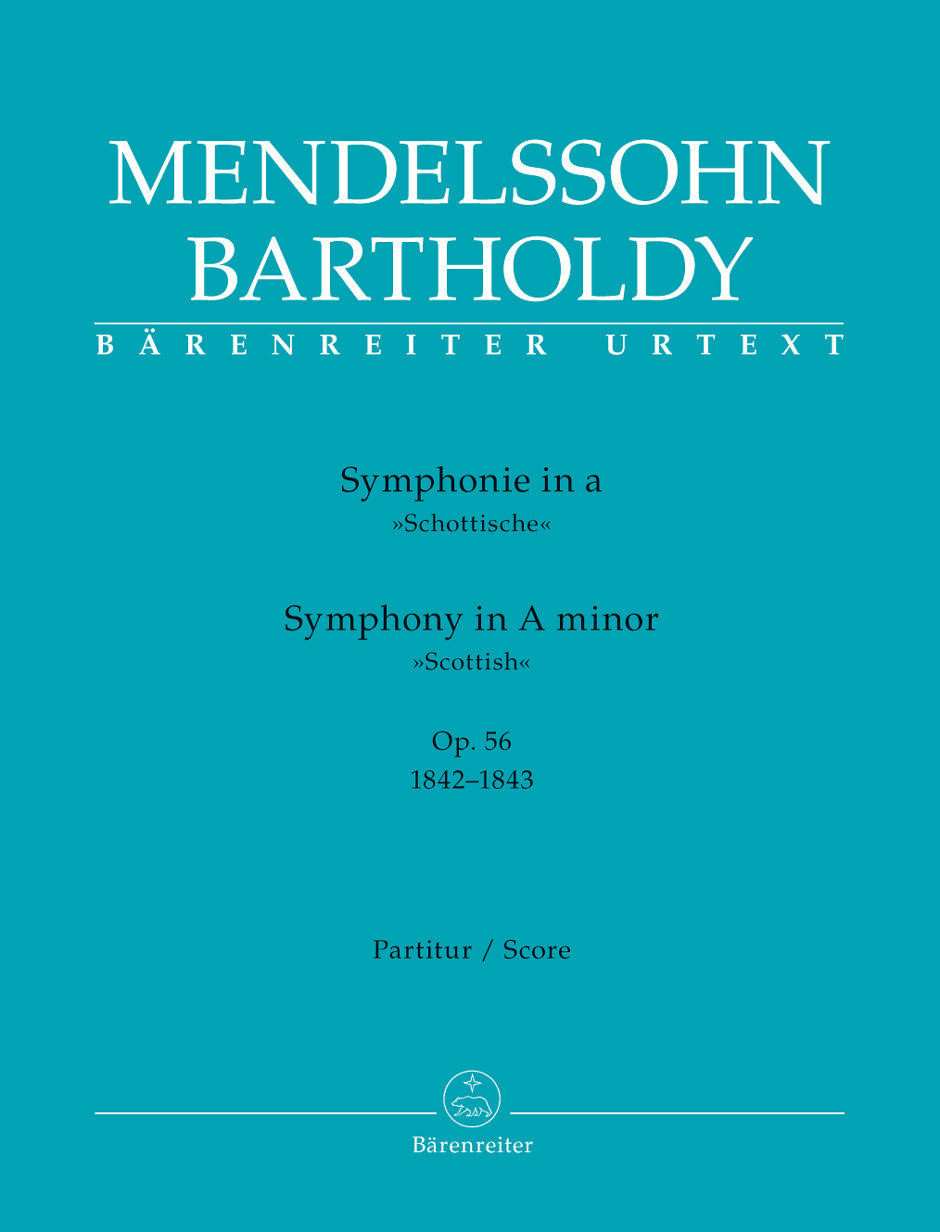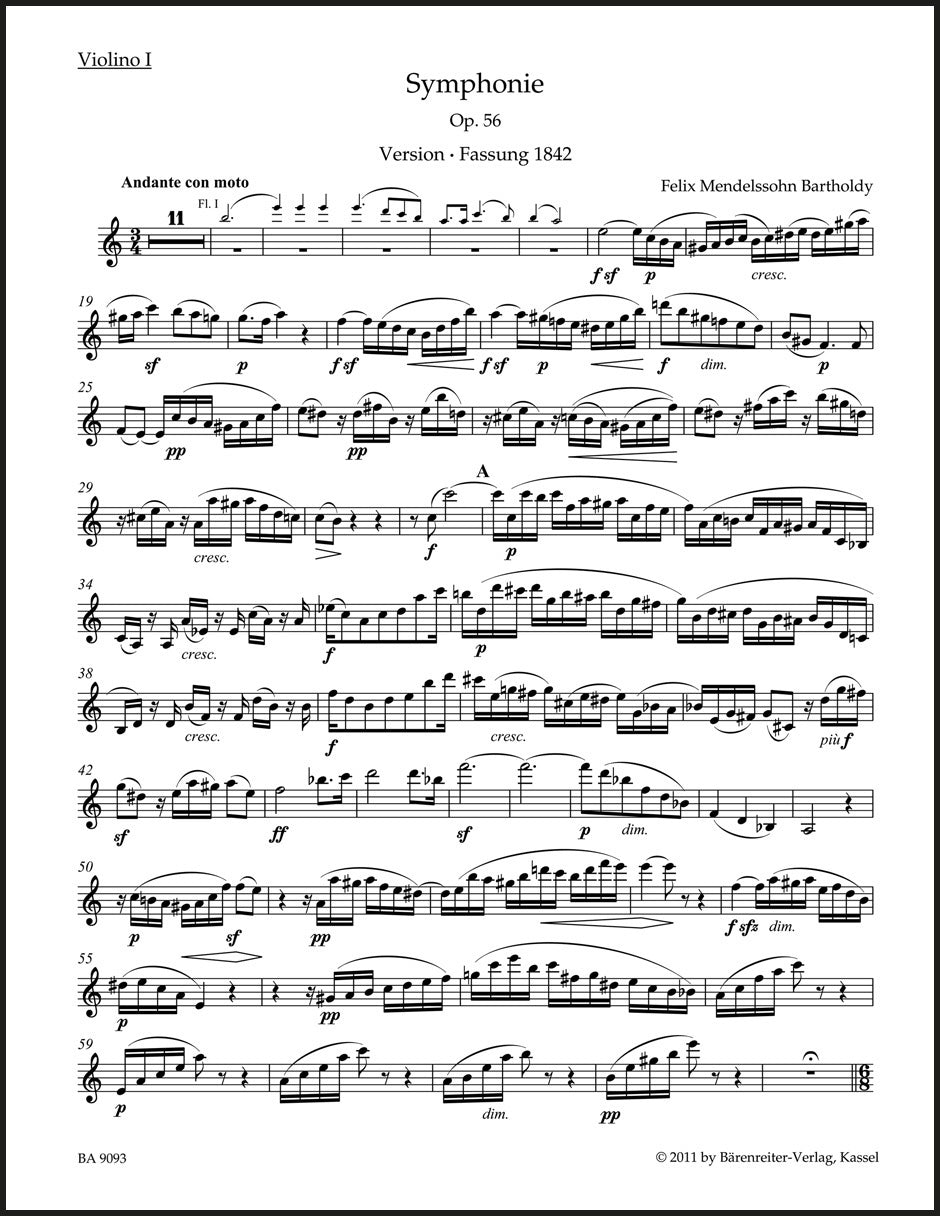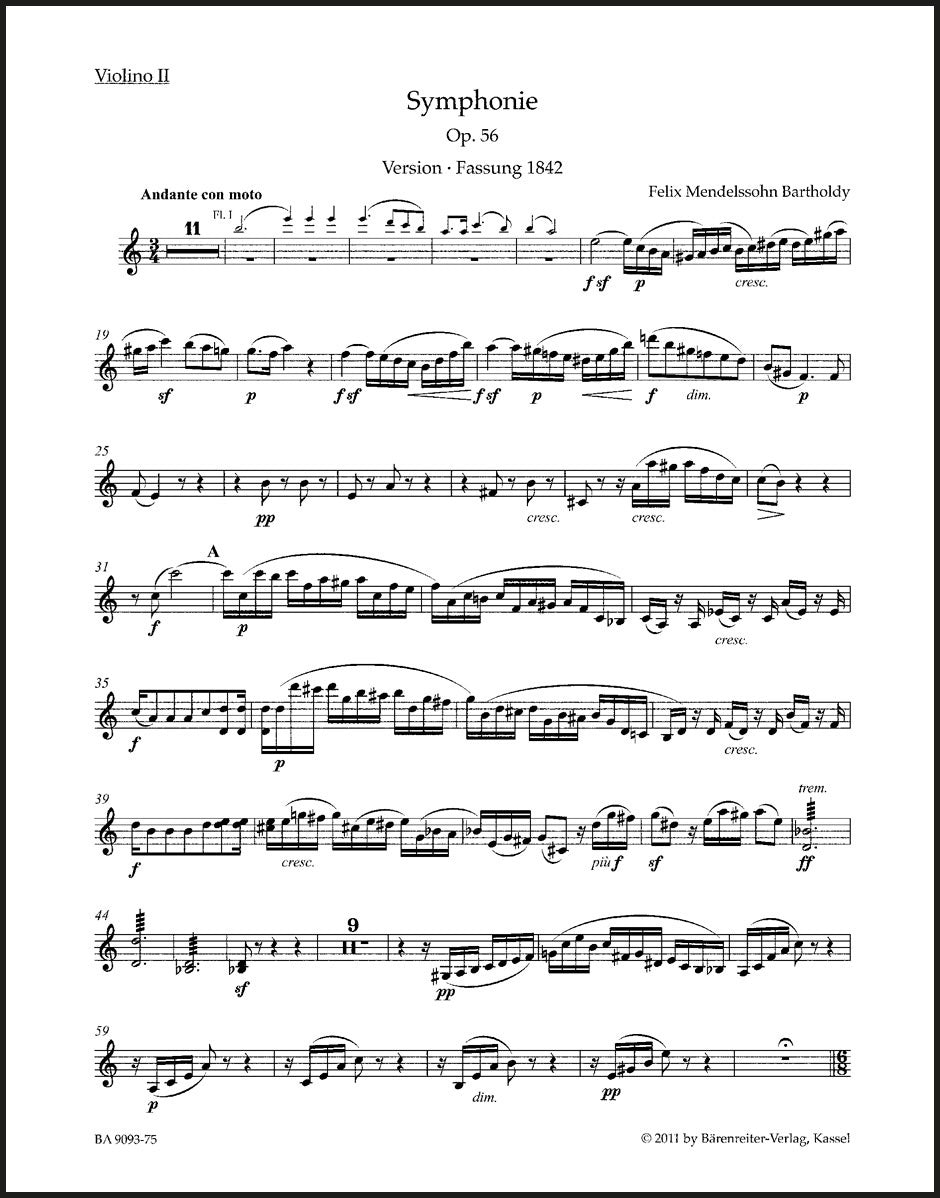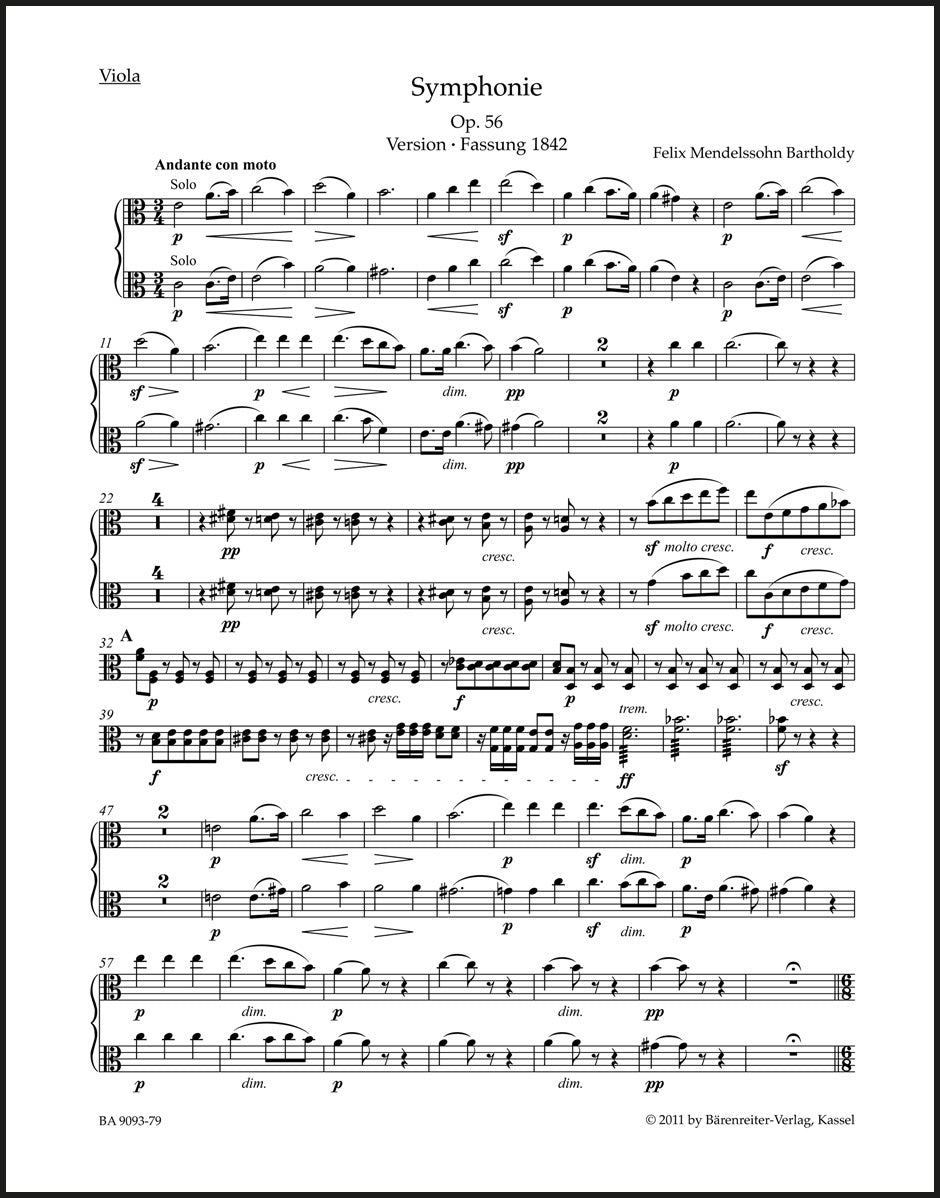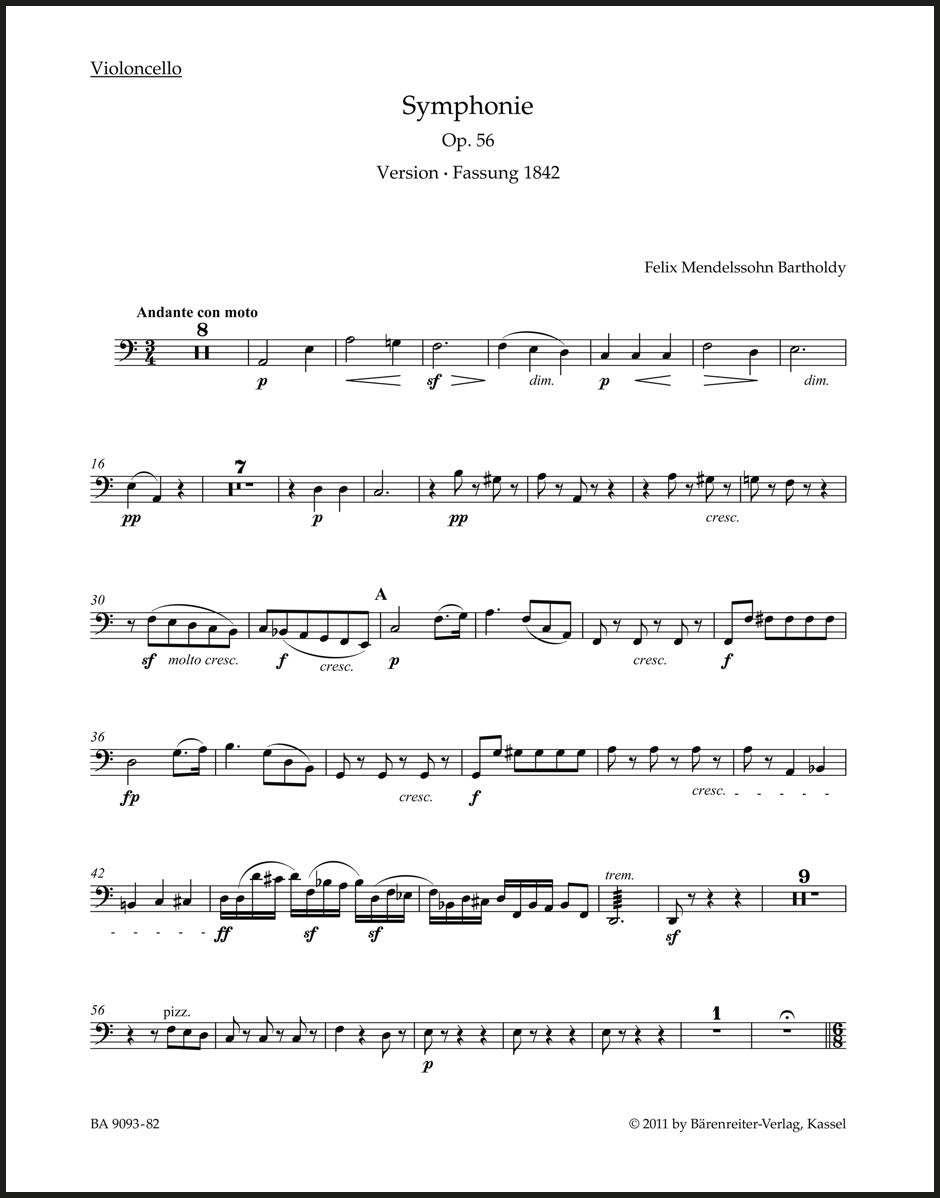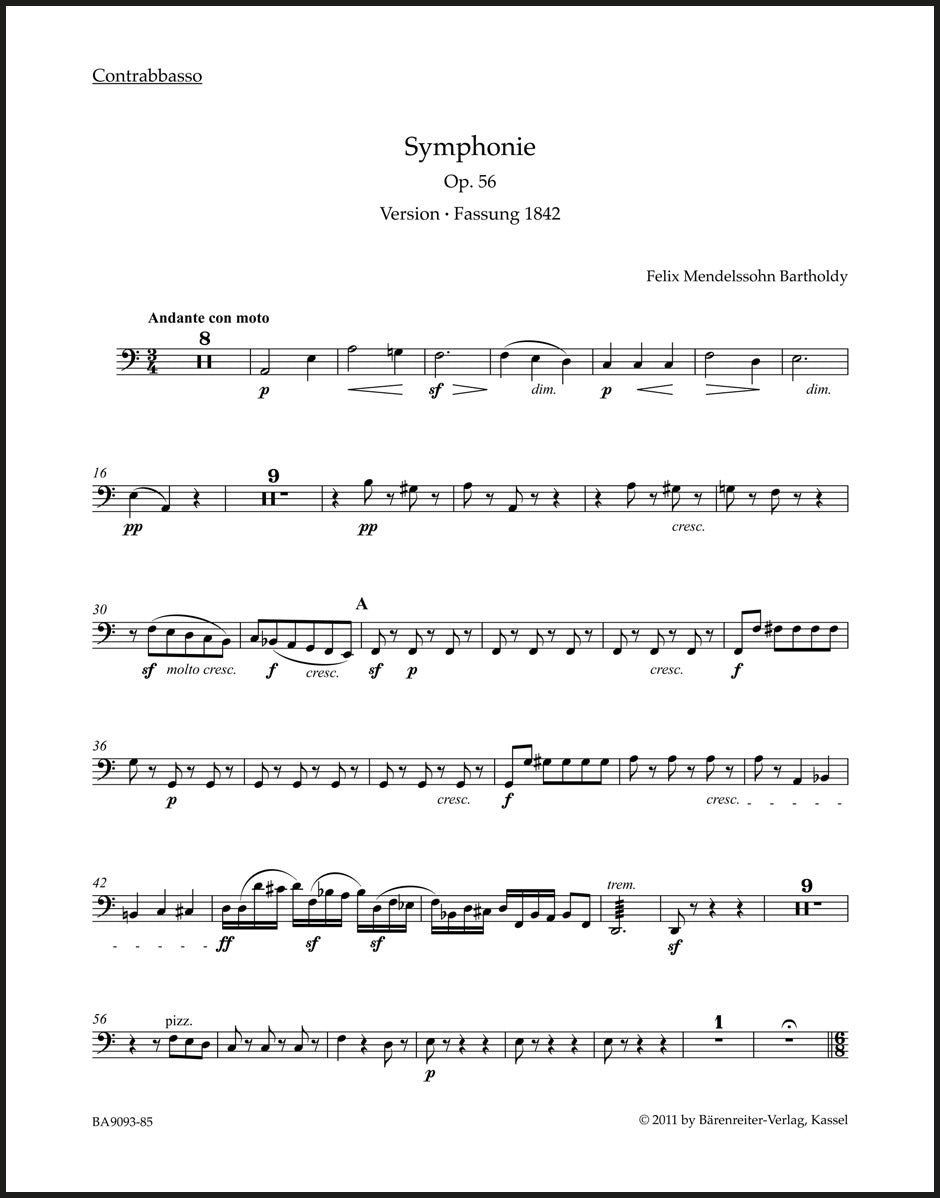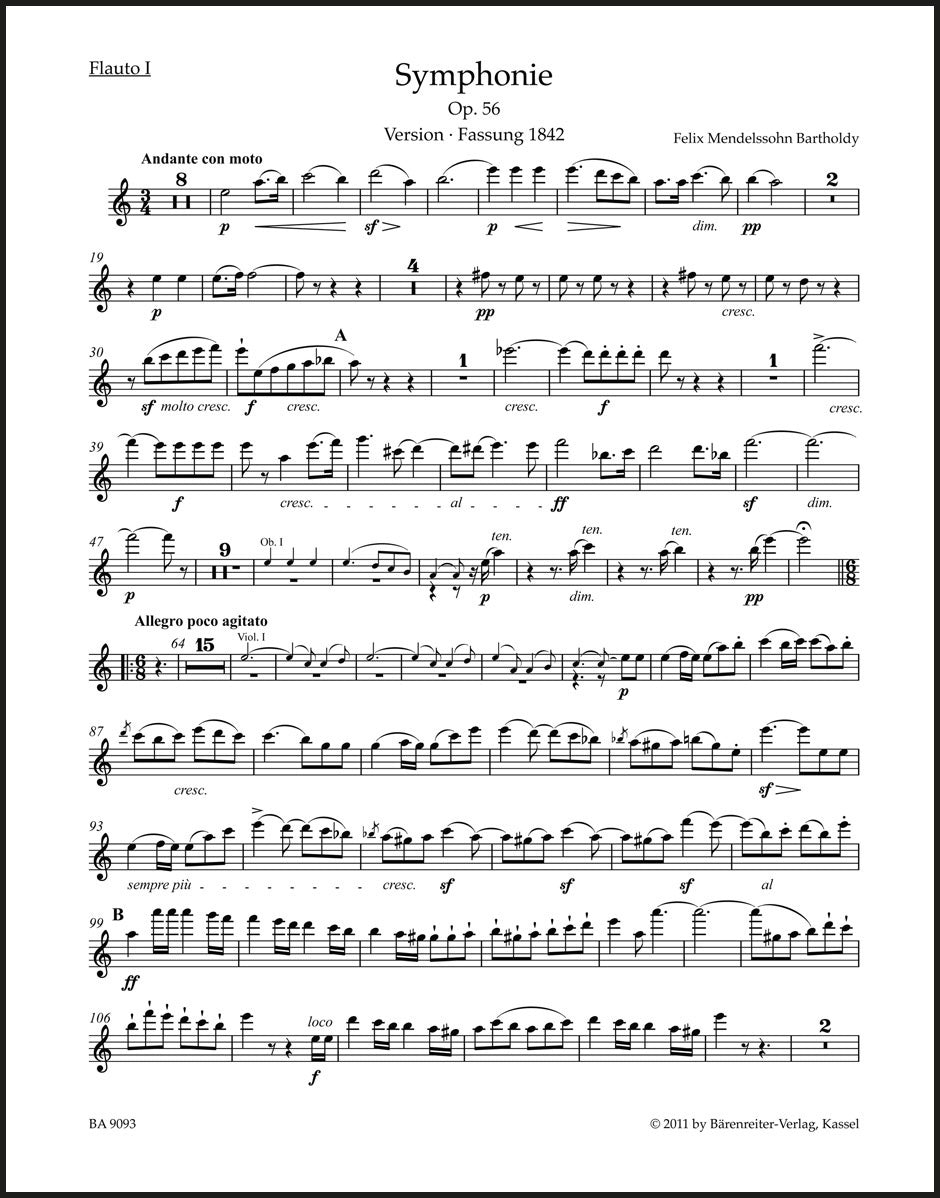Mendelssohn: Symphony No. 3 in A Minor, MWV N 18, Op. 56
"Scottish"
In stock and typically ships within 1 business day.
- Composer: Felix Mendelssohn (1809-1847)
- Instrumentation: Orchestra
- Work: Symphony No. 3 in A Minor ("Scottish"), MWV N 18, Op. 56
- ISMN:
- Size: 9.6 x 12.2 inches
- Pages: 303
- Urtext / Critical Edition
Description
Mendelssohn made his first visit to Scotland in 1829, following which he wrote some of his most successful works, inspired by the Scottish landscape. The "Scottish" Symphony was however not completed until 1842, after a complicated gestation process of over 12 years.
The work was enthusiastically received at its premiere in Leipzig in March that year, and a second performance took place there two weeks later. in the short period between the two concerts, Mendelssohn fully revised the symphony, and this new version was the basis for the performance which he conducted in June 1842 in London. in 1843 Mendelssohn then authorised the work's publication.
The "Scottish", which is often regarded as Mendelssohn's greatest contribution to the symphonic form, survives in several sources and Christopher Hogwood's critical new edition makes use of all of these. The preface contains valuable information and describes Mendelssohn's 12 year compositional process from the first impressions in his youth to a mature large-scale symphony.
The critical edition offers not only the well-known published version authorised by the composer in 1843, but also the London version of 1842. Both versions are presented in score and in performance material. Movements 1 and 4 are presented twice, in the 1842 and the 1843 version, whereas the small number of changes representing the 1842 London version are rendered in movements 2 and 3 as ossia staves in both score and parts.
Publishers use a lot of words to describe what they sell, and we know it can be confusing. We've tried to be as clear as possible to make sure you get exactly what you are looking for. Below are descriptions of the terms that we use to describe the various formats that music often comes in.
Choral Score
A score for vocalists that only contains the vocal lines. The instrumental parts are not there for reference. Generally, cheaper than a vocal score and requires multiple copies for purchase.
Facsimile
Reproductions of the original hand-written scores from the composer.
Full Score
For ensemble music, this indicates that the edition contains all parts on a single system (there are not separate parts for each player). In larger ensembles, this is for the conductor.
Hardcover
Hardbound. Generally either linen-covered or half-leather.
Orchestral Parts
Similar to a wind set, this is a collection of parts. In the case of strings, the numbers listed are the number of copies included, though generally these are available individually (often with minimum quantities required).
Paperback
When publishers offer multiple bindings (e.g. hardcover) or study scores, this is the "standard" version. If you're planning to play the music, this is probably what you want.
Performance / Playing Score
A score of the music containing all parts on one system, intended for players to share. There are not separate parts for each player.
Set of Parts
For ensemble music, this indicates that there are separate individual parts for each player.
Solo Part with Piano Reduction
For solo pieces with orchestra, this is a version that contains a piano reduction of the orchestra parts. For piano pieces, two copies are typically needed for performance.
Study Score
A small (think choral size) copy of the complete score meant for studying, and not playing. They make great add-ons when learning concertos and small chamber works.
Vocal Score
A score prepared for vocalists that includes the piano/organ part or a reduction of the instrumental parts.
Wind Set
For orchestral music, this is a collection of wind and percussion parts. The specific quantities of each instrument are notated.
With Audio
In addition to the printed music, the edition contains recordings of the pieces. This may be an included CD, or access to files on the internet.
With / Without Fingering (Markings)
Some publishers prepare two copies - a pure Urtext edition that includes no fingering (or bowing) suggestions and a lightly edited version that includes a minimal number of editorial markings.

